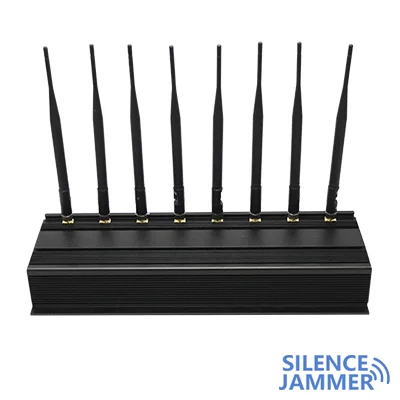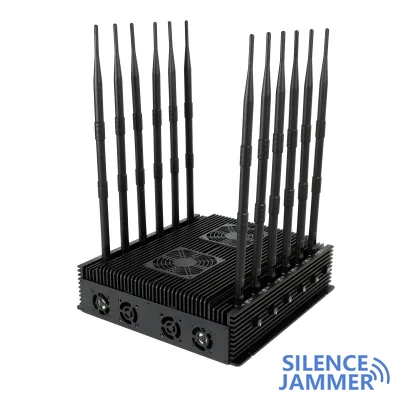
Cell phone signal jammer detection technology
Mobile phone detection technology mainly detects when the electromagnetic wave signal emitted by the mobile phone when it is working causes the electromagnetic power in the area where the mobile phone is to increase to a set value, thereby determining that a mobile phone is working. This technology sounds very advanced at first, but in fact it is just a very superficial understanding. When this technology was proposed, the following issues were not considered:
| Uncertainty of mobile phone transmit power | The specific base station through which a mobile phone enters the network when working is determined by the traffic volume and dynamic deployment of surrounding base stations. When the mobile phone is logged in and used, if the nearby base station is busy, it will log in to the idle base station farther away. The transmit power of the mobile phone will be adjusted accordingly according to the link loss of the mobile phone to the base station radio wave. Usually, the mobile phone receives the signal from the base station. The stronger the signal, the weaker the transmit power. |
| The distance between the mobile phone and the detector (link loss) is uncertain | The distance between the mobile phone and the detector and whether there are any obstacles in the middle will affect the strength of the signal received by the detector. |
| The intensity of space electromagnetic interference is uncertain | Common lightning, fluorescent lamps, electronic equipment, etc. are all sources of interference. At the same time, when mobile phones are working, there is a lot of out-of-band stray noise. Although the surface acoustic filter used in the detector is used on mobile phones, the filter has insufficient out-of-band suppression and is prone to cross-frequency phenomena. When used for detection, it cannot effectively filter out other interference signals, causing the detection system to be in chaos. |
| Detector setting sensitivity is uncertain | Generally, the sensitivity setting of a detector does not have a specific quantitative value. During debugging, adjust the sensitivity by constantly adjusting the position and dialing the mobile phone to observe whether the detector detects it. |
| 3G signal detection is more difficult | Because 3G technology uses advanced technologies such as code division, spread spectrum and time division, and is often submerged in environmental noise, its transmission power is even smaller. Especially with mobile 3G time division technology, mobile phone transmitting and receiving signals are in the same frequency band and are separated by time. If it is in an area with strong TD signals, the detected downlink signal strength exceeds the signal strength sent by the mobile phone, and it will be difficult to detect and distinguish. |
Therefore, the main performance of the shielding system using detection technology is extremely serious false positives and false negatives, which cannot achieve practical purposes.
Mobile phone detection and blocking technology
The detector controls the switch of the signal jammer. When it detects the use of a mobile phone, it immediately turns on the shielding device, hoping to achieve the purpose of immediate shielding. However, in actual operation, the reason why the shielding device cannot be started immediately is that the jammer mainly achieves the shielding effect by preventing the mobile phone from logging into the network, and the login instructions sent by the base station to the mobile phone are issued intermittently. If the mobile phone has logged into the network, especially The call has already been made. When the base station does not send a command to the mobile phone to change the original login, the mobile phone can generally still make normal calls.

This phenomenon is more obvious in China Unicom's 3G and WCDMA networks. Unless the shielding power can far exceed dozens or even hundreds of times of conventional shielding equipment, the effect of immediately interrupting mobile phone communications can be achieved. Such power is not only difficult to achieve in terms of technology and cost, but its radiation is powerful and even more unsafe.


